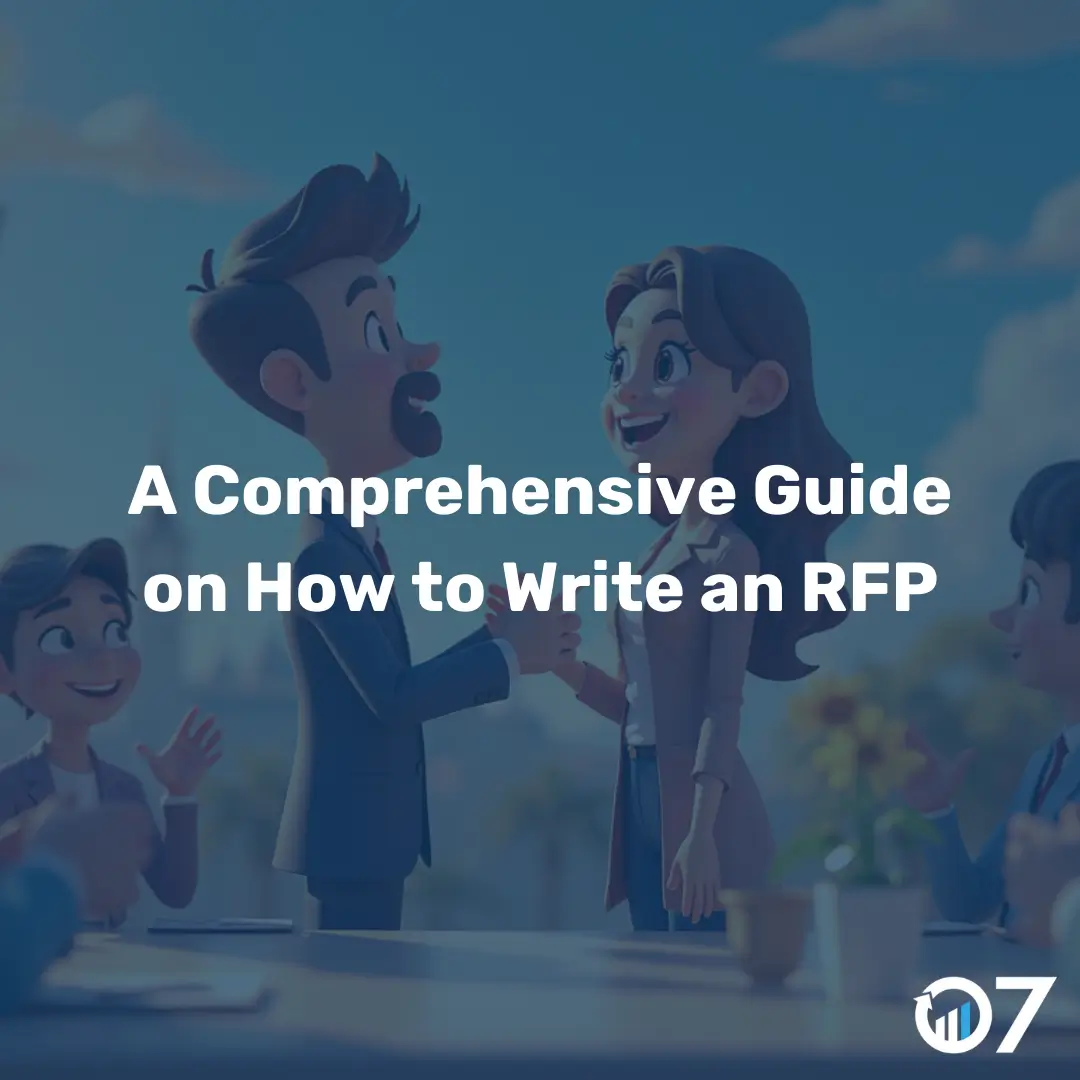How to write an RFP is a crucial skill for businesses seeking external support for projects. This guide will walk you through the process, making it simpler and more effective.
When you’re tasked with writing a Request for Proposal (RFP), it can feel like a daunting process. But don’t worry, we’ve got you covered. Whether you’re a seasoned pro or a newbie, this guide will help you create a strong RFP that attracts the right vendors and gets the job done.
What’s an RFP?
An RFP, or Request for Proposal, is a document that businesses use to solicit bids from potential vendors for a project. It’s like a job posting but for projects. When you need external support and know the type of vendor you’re looking for, an RFP helps you shop around and find the best fit.
RFP vs RFI
Before we dive into writing an RFP, let’s clear up some jargon. An RFP is different from an RFI (Request for Information). An RFI is used when you need more information about a vendor’s capabilities before making a decision. It’s a preliminary step, whereas an RFP is more specific and detailed, aimed at selecting a vendor for a particular project.
How to Write an RFP
Let’s break down the process of writing an RFP into manageable steps. We’ll use a real-world example to make it easier to follow along.
1. Provide Background Information
Start your RFP with an introduction and overview of your business. This sets the stage for potential vendors and helps them understand who they’ll be working with.
For example:
“AJC Health is a health communication firm based in Washington, DC. Our mission is to empower teens and young adults to lead healthier lives. For over 10 years, we’ve helped clients achieve their goals by providing marketing and communications services, including campaign development, copywriting, and multimedia project support.”
2. Define Your Project Purpose and Goals
After introducing your business, provide an overview of the project. This is your chance to describe what you hope to accomplish and the expertise you’re looking for.
For example:
“The purpose of this Request for Proposals (RFP) is to invite businesses specializing in video production, live action, animation, and multimedia for educational purposes to submit proposals. We’re seeking qualified vendors to support the development of a public health video series on behalf of DoGoodGov. Our goal is to build brand awareness, drive web traffic, and increase our YouTube marketing ROI.”
3. Outline the Budget and Scope of Work
This section is where you get into the specifics. State your budget and describe the services you need. Think of it as the “Job Responsibilities” section of a job description.
For example:
“The budget for this project is £12,750. The selected firm will be responsible for the ideation, production, and delivery of a three-part video series to educate teens and young adults about the benefits of living a healthy lifestyle. Tasks include ideating video concepts, writing and editing video scripts, multimedia content development, capturing, importing, and organizing raw media, editing video footage and audio files, creating static and motion graphics, adding music, voice-over, and sound effects, delivering multi-format video files, meeting Section 508 Compliance for video, and general account management.”
4. Call Out Any Barriers or Roadblocks
Mention any challenges specific to your project. This helps eliminate unsatisfactory bidders and identify vendors skilled enough to tackle those challenges.
For example:
“As a federal entity, DoGoodGov requires all materials, including multimedia content, to meet the requirements of Section 508 Compliance. Vendors must have specialized knowledge in 508-Compliance for video production.”
5. Highlight Your Selection Criteria
Specify the skills, services, and market expertise required for consideration. This helps increase your chances of receiving proposals that meet your needs.
For example:
“The ideal vendor has experience in producing high-quality videos across various formats such as live-action, animation, screencast, whiteboard, and educational video. They should have a clear process from ideation, production, revision, and final delivery, experience creating videos for educational purposes, demonstrated knowledge in the requirements of Section 508 Compliance, and a highly responsive, collaborative, and transparent communication process.”
6. Specify Your Submission Process
Outline the submission process to ensure you end up with a strong collection of proposals. Tell vendors where to submit their bids, to whom, and provide a timeline.
For example:
“Submissions may be sent via mail or electronically by the submission deadline. The project name or description is Video Production Services. Company Name: AJC Health. Address: 123 Howie Ave., Silver Spring, MD 20906. Procurement Contact Person: Alana Chinn. Telephone Number of PCP: 123-456-7890. Email Address of PCP: achinn@consulting.com. Proposals must be submitted by February 10th. The award will be granted no later than March 1st. Final video delivery must occur by June 30th.”
Tips for How to Write an RFP
Here are three tips to help you optimize your RFPs and achieve a high response rate from vendors.
1. Keep the Lines of Communication Open
Providing access to a point of contact shows that your company is invested in the vendor response process and helps you establish a rapport. Encourage prospective vendors to ask questions and seek clarification before submitting a proposal. The more they understand your needs, the better their proposals will be.
2. Make Sure Your RFP is Detailed but Scannable
Strike a balance between providing enough detail and making the document easily scannable. Use formatting options like bullet points and headings to break up information. This allows you to provide the necessary information in a digestible way.
3. Proofread Your RFP Before You Go Live
Even small mistakes could derail project timelines. Proofread your RFP multiple times to ensure accuracy. Missing a zero in your budget details or including the wrong date for your proposal deadline could force a restart of the entire RFP process and waste precious time.
Now You Know How to Write an RFP
So, there you have it. Writing an RFP doesn’t have to be a chore. With these steps and tips, you can create a strong RFP that attracts the right vendors and gets your project off the ground. If you need more insights, feel free to explore our blog or contact us via email at info@07hm.co.uk or telephone at 01702 410663.





